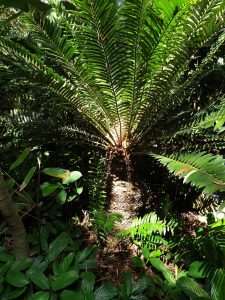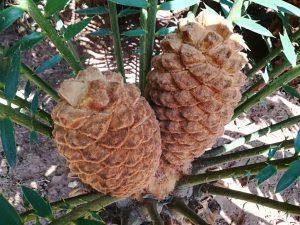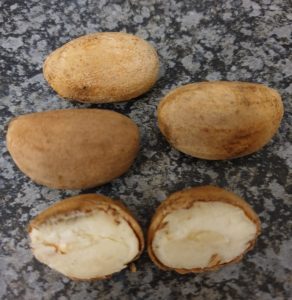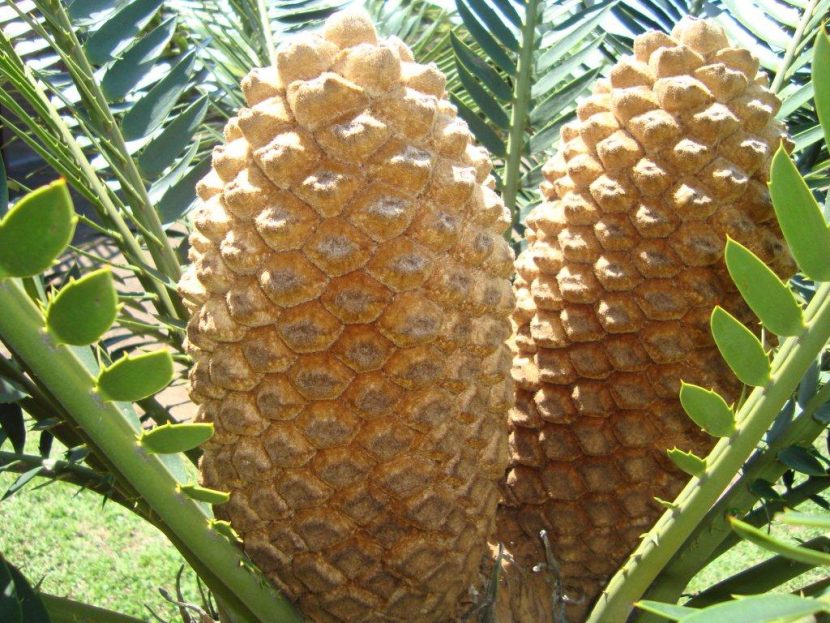(Ngotshe Cycad)
Endemic to the Dlomodlomo hill on the late acromegaly Ewart Potgieter’s (world’s tallest boxer and actor) farm in the Vryheid disctrict in KwaZulu-Natal province, South Africa. His son has taken over the conservation of the cycads on the farm. They thrive among the centuries old Boophone disticta and aloes.


Aemulans used to be classified under the E. natalensis group as a variety, but since the cones differed, the male cones resembled the female cones to such an extent that they have been reclassified as a separate species.
Stem: Arborescent and erect.
Leaves: Dark green and shiny on top and light green underneath. Pinnae at the tip of the leaf are densely clustered, while it seperates gradually towards the middle and at the base of the leaf the pinnae are much wider appart. Each pinnae has 1-3 thorns on the distal edge.
Habitat: E. aemulans enjoy full sun grasslands, ideally on south-facing sandstone cliffs in their natural habitat.
Cones: E. aemulans female plants normally produce one to three cones and the males usually two to four. The cones are covered with a brown wool. They are pollinated around March/April. The yellow male and female cones are very similar in appearance and both male and female cones present a green tinge.


Seedlings: Up to 1 year of new seedling growth, it is very difficult to distinguish E. aemulans from E. natalensis varieties and E. msinganus.
Seeds: seeds are harvested around November and each cone produces approximately 400 seeds.


